Festo DFST-32-20-D-Y4-A-S-G2 Handleiding
Festo
Niet gecategoriseerd
DFST-32-20-D-Y4-A-S-G2
Bekijk gratis de handleiding van Festo DFST-32-20-D-Y4-A-S-G2 (4 pagina’s), behorend tot de categorie Niet gecategoriseerd. Deze gids werd als nuttig beoordeeld door 3 mensen en kreeg gemiddeld 4.5 sterren uit 2 reviews. Heb je een vraag over Festo DFST-32-20-D-Y4-A-S-G2 of wil je andere gebruikers van dit product iets vragen? Stel een vraag
Pagina 1/4

Translation of the original instructions
© 2020 all rights reserved to & Co. KGFesto SE
1 Applicable Documents
All available documents for the product www.festo.com/sp.è
2 Safety
2.1 Safety instructions
– Take into consideration the ambient conditions at the location of use.
– Only use the product in original status without unauthorised modifications.
– Observe labelling on the product.
– Store the product in a cool, dry, UV-protected and corrosion-protected envir-
onment. Ensure that storage times are kept to a minimum.
– Prior to mounting, installation and maintenance work: Switch off compressed
air supply and secure it from being switched back on.
– Observe tightening torques. Unless otherwise specified, the tolerance
is±20%.
2.2 Intended Use
The stopper cylinder DFST is designed for use as a retractable fixed stop in order
to reach defined holding positions with transported material (e.g. on mounting or
sorting systems). The DFST sorts the stationary transported material in buffer
zones.
Fig. 1 Stopping transported material
2.3 Foreseeable misuse
With DFST-...-L: the toggle lever must not be overrun in the stop direction by the
transported material when the lever locking mechanism is active. Otherwise the
transported material will damage the locking mechanism.
2.4 Training of qualified personnel
Installation, commissioning, maintenance and disassembly should only be con-
ducted by qualified personnel.
The skilled personnel must be familiar with the installation of pneumatic control
systems.
3 Further information
– Accessories www.festo.com/catalogue.è
– Spare parts www.festo.com/spareparts.è
4 Service
Contact your regional Festo contact person if you have technical questions
èwww.festo.com.
5 Product overview
5.1 Function
The stopper cylinder DFST is a double-acting cylinder. The piston rod is extended
with the toggle lever mechanism by pressurising the supply port . The toggle1
lever gently stops the incoming transported material with the integrated shock
absorber. The piston rod is retracted by pressurising the supply port . The2
stopper cylinder with spring return (not applicable for DFST-...-D/DL) can also be
set to single-acting. This is done by screwing a silencer into the supply port .1
This makes sense if reduced extension velocities are sufficient.
Lever Locking Mechanism
With the stopper cylinder DFST-..-L with a factory-installed lever locking mechan-
ism, the toggle lever locks into its end position. When the stopper cylinder is
retracted, the toggle lever locking mechanism is automatically deactivated.
5.2 Structure
1
Supply port (extending, 2x)
2
Supply port (retracting, 2x)
3
Guide rod for protection against
rotation
4
Piston rod
5
Detent for knurled nut
6
Roller toggle lever
7
Stop roller
8
Thread for inductive proximity
sensor (2x)
9
Lever locking mechanism (option-
al)
10
Knurled nut for setting the cush-
ioning
11
Stop for lever locking mechanism
12
Hole for mounting toggle lever
deactivation mechanism
13
Through-hole for mounting (4x)
14
Slot for proximity sensor (6x)
Fig. 2 Product design
8123248
DFST-32-...-G2
Stopper cylinder
8123248
2020-01
[8123250]
Instructions| Operating
Festo SE & Co. KG
Ruiter Straße 82
73734 Esslingen
Germany
+49 711 347-0
www.festo.com

6 Mounting
6.1 Preparation
Fig. 3 Maintain required distances
• Leave sufficient space for the pneumatic connections and for replacing the
shock absorber.
Fig. 4 Alignment of transported material
• Observe the following points:
– the conveyed material impinges on the roller of the toggle lever.
– the direction of transport of the transported material is exactly perpendic-
ular to the roller toggle lever.
Fig. 5 Changing stopper head
• The roller toggle lever can be rotated 90° to each of 4positions by the off-9
set of the guide rod. Lock guide rod with thread-locking compound when
screwing it into the new position.
Fig. 6 Mounting Clearances
• Observe distances X
1
, X
2
and X
3
. The distances refer to the bottom of the
flange as the mounting level of the stopper cylinder with the piston rod exten-
ded.
Size 32
X1 (maximum distance from the bottom of the pallet) [mm] 76.1
X2 (toggle lever pressed) [mm] 81.3
Size 32
X3 (minimum distance from the bottom of the pallet) [mm] 73.8
1)
1) The dimensions refer to the position of the maximum energy absorption (knurled nut in the upper posi-
tion).
Tab. 1 Mounting Clearances
6.2 Mounting
Fig. 7 Direct mounting
• Fasten the stopper cylinder with 4 screws.
Size 32
Screw M6
Tab. 2 Screw Sizes
6.3 Mounting Accessories
Proximity Sensor
Fig. 8
• Fasten the proximity sensor in the thread or in the slot in accordance8 aD
with the assembly instructions.
Lever Deactivating Mechanism
Fig. 9 Lever Deactivating Mechanism
• Attach the lever deactivating mechanism in accordance with the assembly
instructions.
7 Pneumatic installation
• Select one of the two alternative connections:

A
Connection on flange
B
Connection from below
Fig. 10 Alternative pneumatic ports
• Select one of the two actuation types (single-acting/double-acting):
2
Retracting connection
1
Extending connection
Fig. 11 Double-acting actuation
2
Retracting connection
S
Silencer
Fig. 12 Single-acting actuation
1. When used as a single-acting cylinder: screw a silencer into the supply port
on the bottom ( www.festo.com/catalogue).è
2. Connect hoses to supply ports.
If necessary, convert and seal threaded pins in the alternative connections.
8 Commissioning
WARNING!
Risk of injury due to unexpected movement of components.
• Protect the positioning range from unwanted intervention.
• Keep foreign objects out of the positioning range.
1. Pressurise the system slowly.
2. Start test run:
Double-acting insert Single-acting insert Reaction
Pressurise supply port. Exhaust supply port. The piston rod extends.1 2
Start stopper cylinder with transported material. The moving transported
material is stopped and
presses the toggle lever to the
rear end position (with the
DFST-...-L variant this locks
the toggle lever).
Pressurise supply port and2
exhaust supply port. 1
Pressurise supply port. The piston rod retracts. The2
lever deactivating mechanism
is released. The transported
materials is moved on.
Pressurise supply port and1
exhaust supply port.2
Exhaust supply port. Piston rod extends. The stop-2
per cylinder can stop the next
batch of transported material.
Tab. 3 Commissioning Steps
3. Finish test run after completing all settings.
Automatic Unlocking of the Lever Locking Mechanism with DFST-...-L (Accessor-
ies)
Fig. 13
• Pressurise supply port.2
Ä
When the piston rod is retracted, it presses the lever locking mechanism
on the screw and releases the toggle lever.
Cushioning Setting
Fig. 14 Adjust shock absorber
1. Loosen the detent for the knurled nut .5
2. Turn knurled nut until the desired cushioning is reached.
Ä
When the setting is correct, the transported material presses the toggle
lever quickly and stops. The cushioning is too hard if the transported
material springs back immediately or requires a long time to press the
toggle lever down completely. The cushioning is too soft if the toggle
lever hits the end position hard without any visible damping.
The setting range has an upper and a lower stop:
– Turn knurled nut anticlockwise in the "+" direction: cushioningaJ
becomes harder
– Turn knurled nut clockwise in the "-" direction: cushioningaJ
becomes softer
3. Tighten the detent for the knurled nut . Tightening torque: 1.5 Nm5
9 Maintenance
9.1 Cleaning
Clean the outside of the product with a soft cloth. Do not use aggressive cleaning
agents.
Product specificaties
| Merk: | Festo |
| Categorie: | Niet gecategoriseerd |
| Model: | DFST-32-20-D-Y4-A-S-G2 |
Heb je hulp nodig?
Als je hulp nodig hebt met Festo DFST-32-20-D-Y4-A-S-G2 stel dan hieronder een vraag en andere gebruikers zullen je antwoorden
Handleiding Niet gecategoriseerd Festo
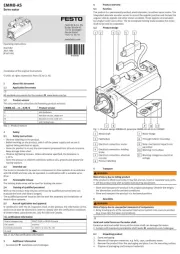
16 Juni 2025
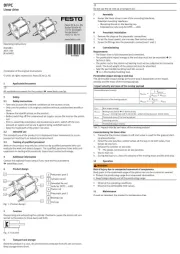
16 Juni 2025
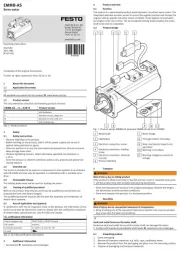
16 Juni 2025
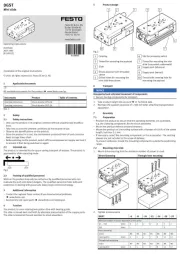
16 Juni 2025
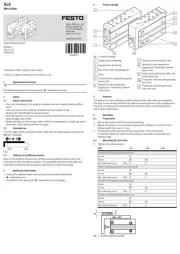
16 Juni 2025
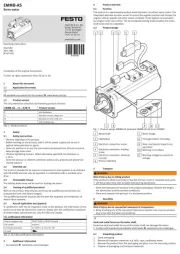
16 Juni 2025
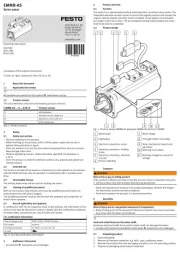
16 Juni 2025
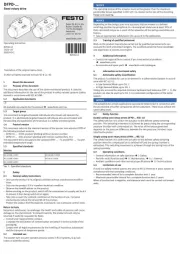
16 Juni 2025
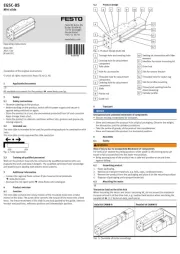
16 Juni 2025
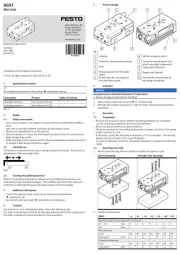
16 Juni 2025
Handleiding Niet gecategoriseerd
- Arcelik
- RGBlink
- Lumantek
- Vinpower Digital
- The T.bone
- Caberg
- Hayward
- Guzzanti
- MDT
- XPG
- Nivona
- Keter
- BABY Born
- Wooden Camera
- Maruyama
Nieuwste handleidingen voor Niet gecategoriseerd
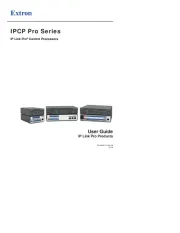
31 Juli 2025

31 Juli 2025

31 Juli 2025
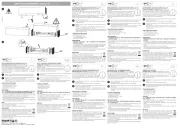
31 Juli 2025
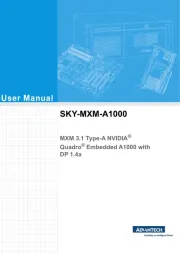
31 Juli 2025

31 Juli 2025

31 Juli 2025
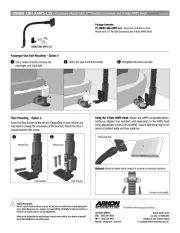
31 Juli 2025
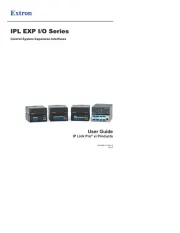
31 Juli 2025
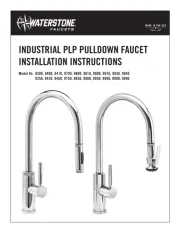
31 Juli 2025